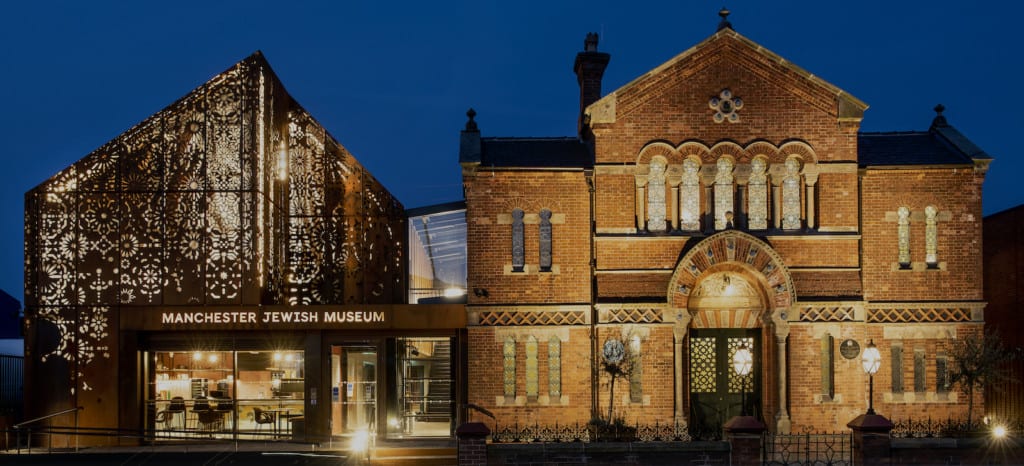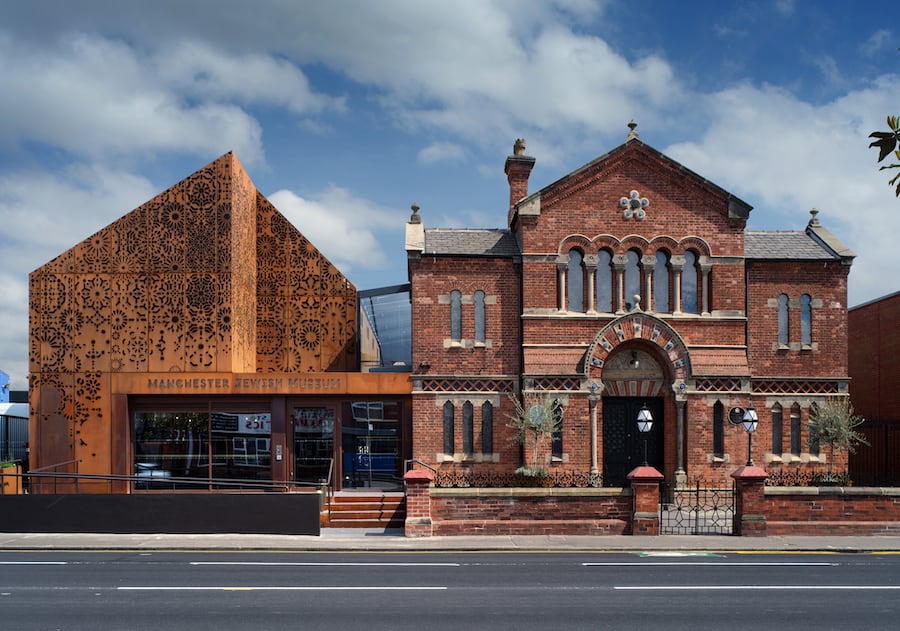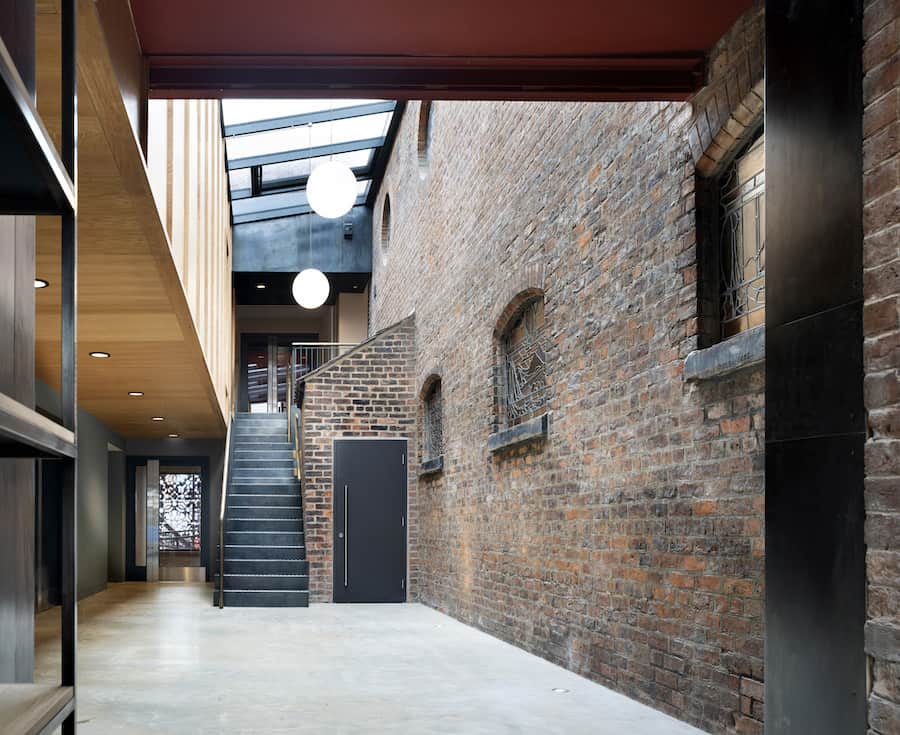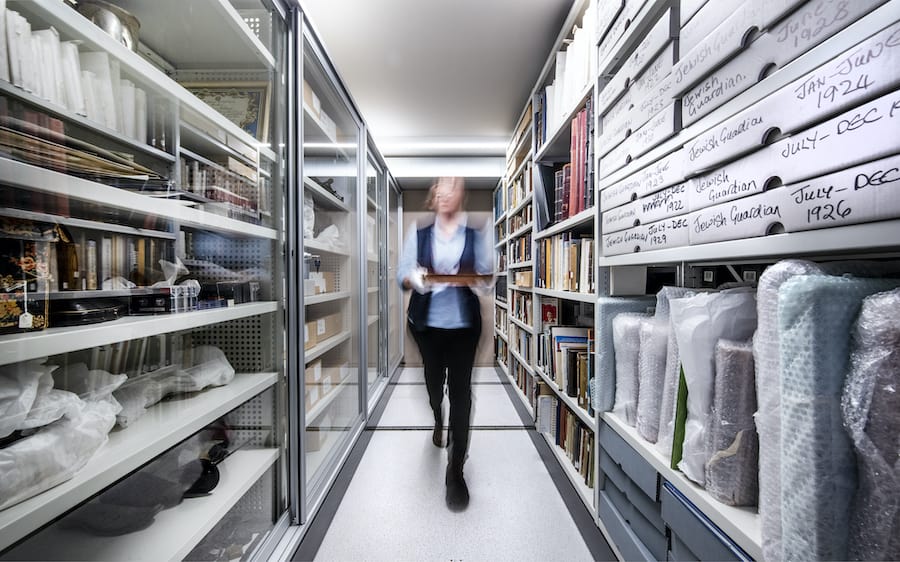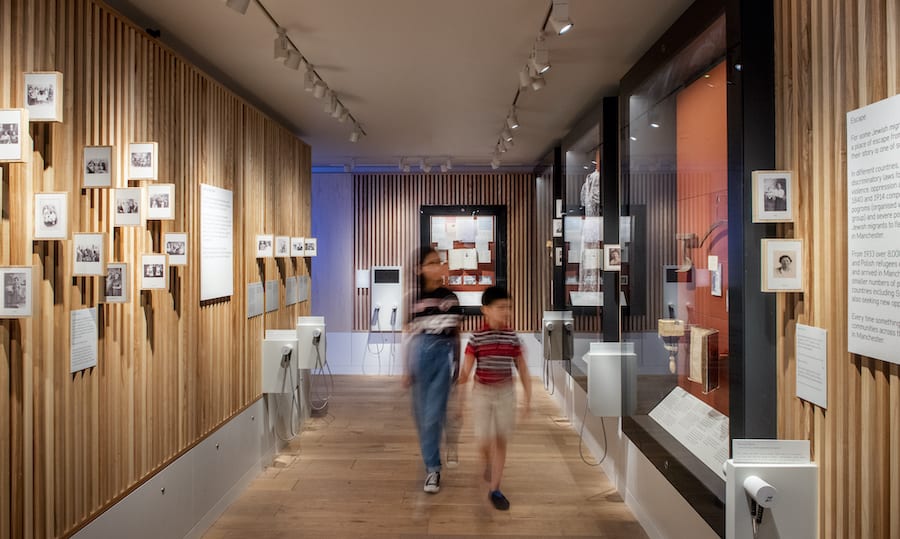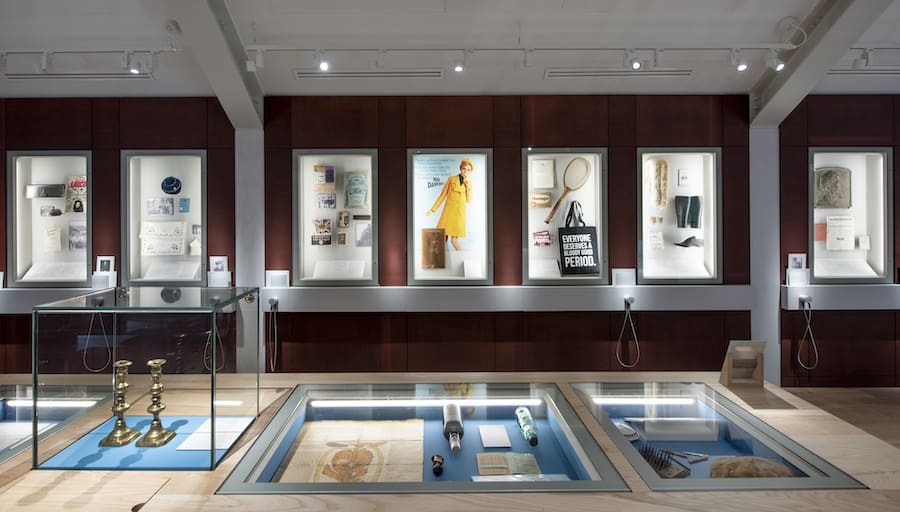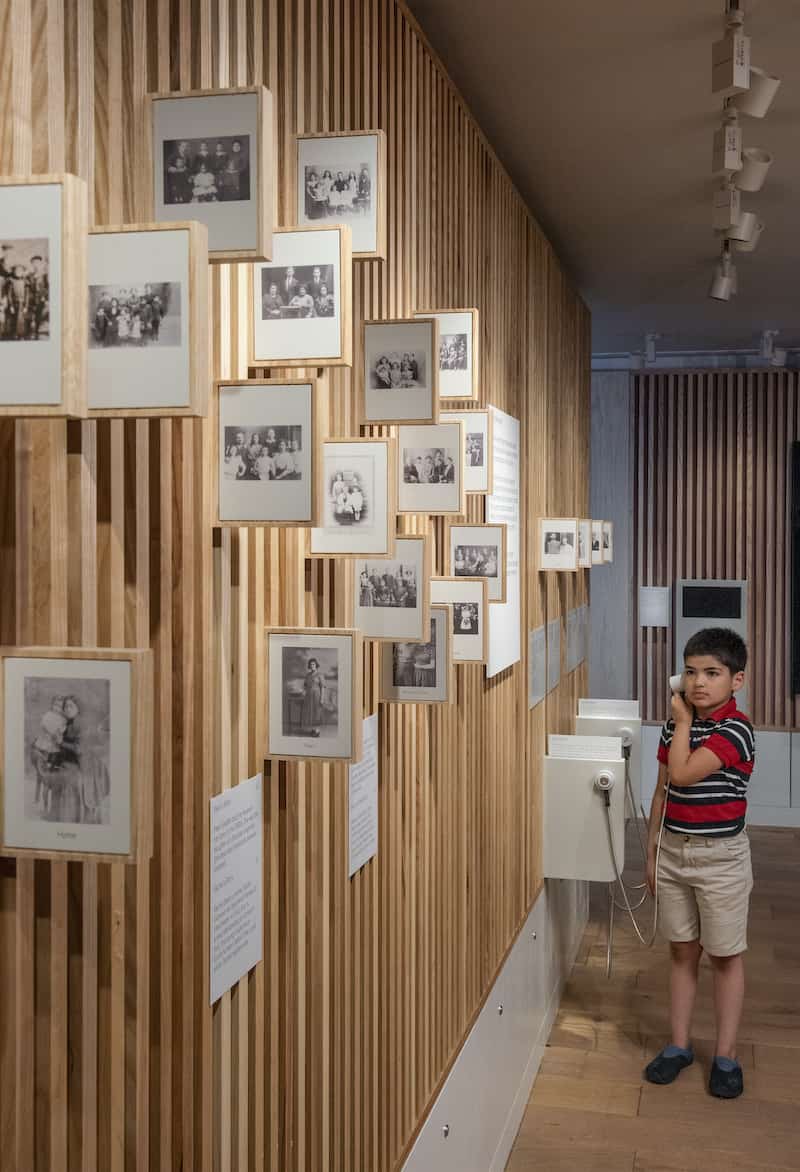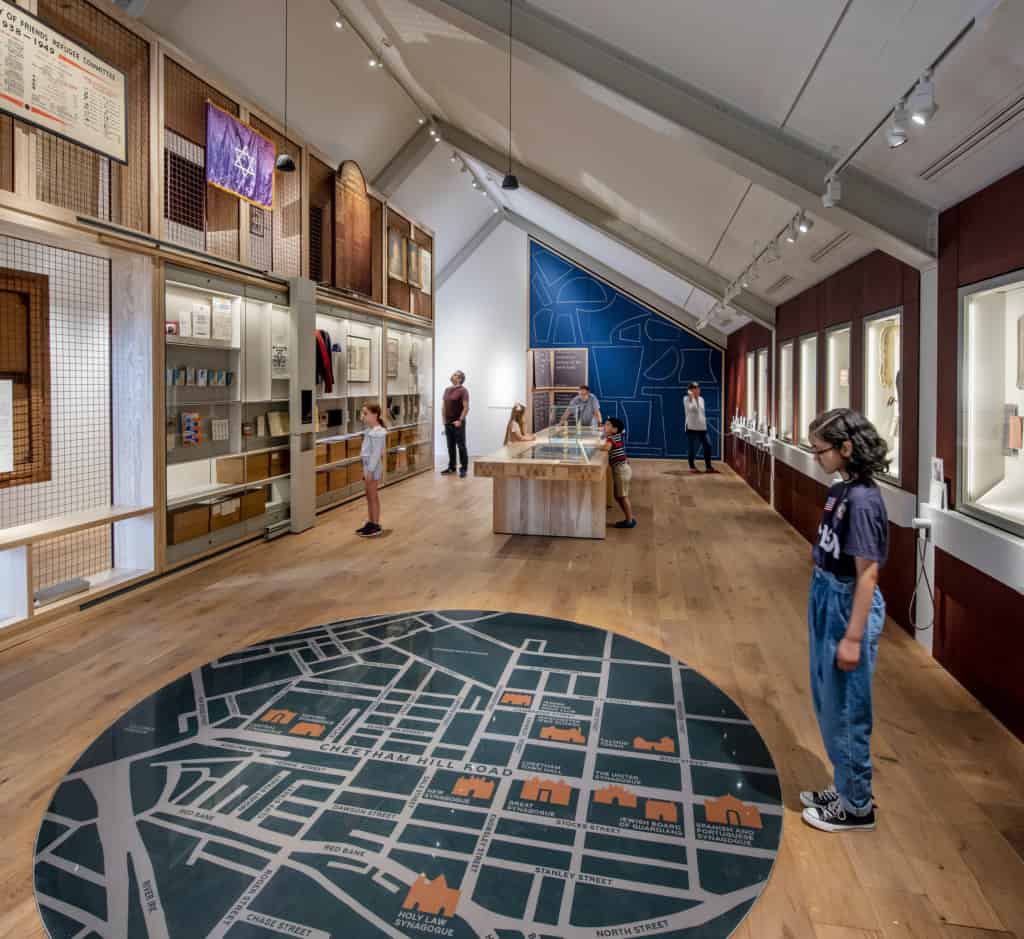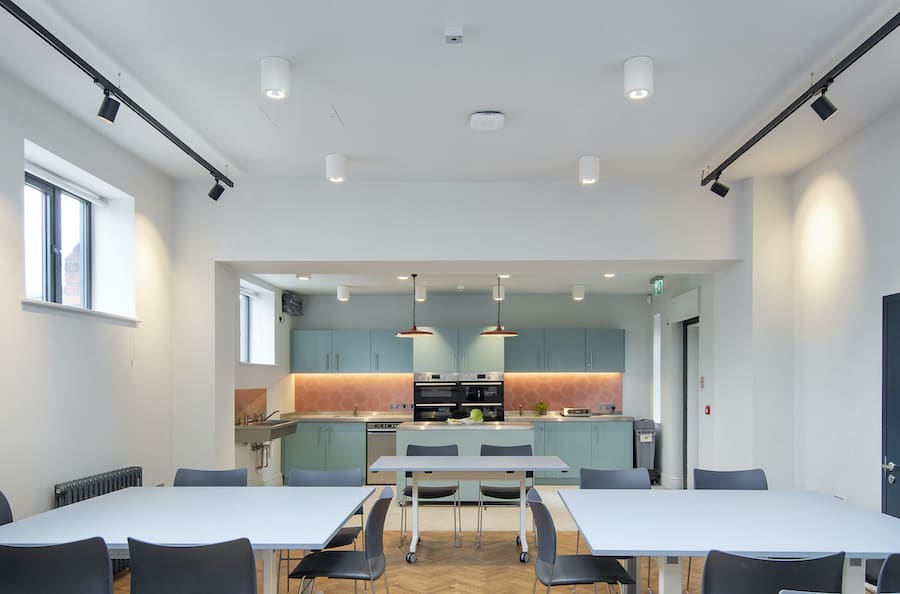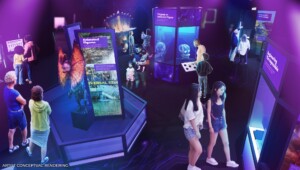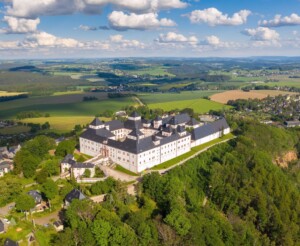Manchester Jewish Museum has re-opened after a major renovation. It features a new gallery, studio, kitchen, shop and café, doubling its original space.
The museum, which holds over 31,000 objects and personal histories, tells the story of Jewish Manchester as well as wider stories of migration, community and identity. The renovation also sees the launch of a new programme. This marks the museum’s mission to use Jewish stories to connect to the world.
Renovating and rethinking
CEO Max Dunbar, leading the major capital project at Manchester Jewish Museum, talked to blooloop about the renovation and the ethos underpinning the museum.
He outlines the project’s inception.
“The museum first opened in 1984, housed in a former synagogue building. I started at the museum about 10 years ago. At that point, there was a sense, having talked to a lot of people, that the building itself was very intimidating, and it didn’t really appeal to many non-Jewish audiences. People would say, ‘I’m not Jewish, so am I allowed to come in?’
“Straight away, we recognised there was an issue. We are a museum for everyone, and our collections explore wider issues around journeys, communities and identities.
“We wanted to address that problem; to invite people in and create a new building that was a more welcoming, open environment. One where everyone would feel welcomed, and also everyone would want to come in. That was a large part of the thinking behind it.”
Manchester Jewish Museum
At the same time, he adds:
“We have a fantastic collection of over 31,000 items. These explore the many diverse stories of Jewish Manchester. However, we simply didn’t have space to display most of that collection. We were desperate for a dedicated gallery space. The combination of creating a more open, welcoming museum building, as well as being enabled to showcase our collection was driving the thinking behind the project.
“Additionally, the star object of our collection, the synagogue building itself, needed repairs and was looking tired and dated.”
Part of the project, therefore, involved the repair and refurbishment of the synagogue, restoring it to its former glory.
The 1874 Grade II* listed synagogue is Manchester’s oldest surviving synagogue.
“It’s stunning,” he says:
“It’s a Sephardi (Spanish and Portuguese) synagogue, renowned for its Moorish architecture. Through this project, we have been working with historic paint specialists that have analysed paint samples and identified the original colour scheme that was used when it first opened in 1874. We can confidently say that we have put it back to how it would have looked when it first opened.”
Bringing people together
The museum’s vegetarian, kosher-style café is located at the new, welcoming entrance to the museum:
“Food is very much at the heart of a lot of the work we do around this mission of bringing people together,” Dunbar says:
“What better way is there of bringing people together than food – baking, cooking and eating together? The café is right at the front of the museum, so anyone can come in and eat a bagel or have a coffee.”
The Manchester Jewish Museum project has taken around a decade to reach completion:
“I started ten years ago, which is when we started to have those initial discussions. We were first awarded our National Heritage fund grant in 2015, and it started becoming very real. For the last six years, we’ve had our architects and engineer teams on board, so it has been, altogether, about 10 years from the initial discussions to the finish.”
Making the building stand out
The museum is situated on one of the main busy roads leading into Manchester.
“There is a lot of traffic,” says Dunbar. “What we wanted to do was to make this building stand out. The pattern on the facade of the new extension is inspired by the Moorish designs inside the synagogue. They are backlit, so in the evening the building glows.”
“On this big, busy main road going into Manchester, surrounded by a lot of offices and warehouses, there is this amazing new contemporary museum building, that also has this incredible pattern beaming from it. A key part of the brief to the architects was to make the building stand out on this busy road.”
Reimagining Manchester Jewish Museum
He goes on to describe the physical space of the reimagined Manchester Jewish Museum:
“The design is a lot more open now. So anyone walking or driving past can see straight into the main entrance. As you walk in, you’re greeted by our volunteers and staff team on the welcome desk.
“To the left, you can walk into our vegetarian, kosher-style café; anyone is welcome there. They don’t have to be a museum visitor, so don’t have to pay admission just to get into the café.”
“Those that do want to explore the museum pay an admission fee at the welcome desk, and then they walk past our collection store. One of the first things they see now in the new Welcome Atrium is a huge window. This looks into all the objects and archives we’ve got in storage. There are also several temporary displays.
“The whole premise behind that is that we feel it’s important to remind visitors from the beginning that they are in a museum, not a synagogue.”
A professional collection store
“People used to describe it as a ‘synagogue with some old displays in’. However, we are now very much establishing ourselves as a museum with a professional museum collection store. It is environmentally controlled and enables researchers to book appointments with us now and access the collections in that special archive room.
“Visitors then walk up our new Welcome Atrium stairs and arrive in the gallery. The whole first floor of the new extension is our new permanent gallery.”
Previously, the exhibition was in the former Ladies’ Gallery in the synagogue. The display itself had to be compromised to fit into the unusual space. There was no lift access, so not all visitors could access it. The new gallery at the Manchester Jewish Museum, specifically designed for the collection, celebrates the objects and the stories they represent.
There is now lift access as well as a built-in hearing induction loop.
A museum for everyone
Dunbar says:
“We spent a lot of time thinking about how we want to present the stories of Jewish Mancunians, and how to display our collection on this gallery. We were discussing the possibility of taking a very traditional chronological approach, with a timeline on the wall – that sort of effect.”
“However, we felt that, for a start, a timeline on the wall goes out of date straight away. So it isn’t ideal. It also isn’t a particularly engaging approach for everyone, and not everyone would be able to relate to it.
“Going back to the idea of a museum for everyone, we wanted to take a thematic approach. So, we came up with three themes that everyone can identify with, whether they are Jewish or not.”
Three key themes at the Manchester Jewish Museum
The three themes around which the Manchester Jewish Museum is based are JOURNEYS, COMMUNITIES, and IDENTITIES:
“They are quite broad, universal themes, but have strong connections with the stories in our collection,” he explains:
“In the JOURNEYS themed area, for example, we look at why people came to Manchester. We look at the many different countries people came from, to show just how diverse Jewish Mancunians are.”
From 18th century pedlars to Holocaust Survivors and 20th-century refugees, the collection reflects each wave of Jewish migration into Manchester:
“In the 19th century, Manchester had a booming textile industry, and a lot of Jewish Mancunians came for that very reason. As well as those who came for trade, there were also, of course, those fleeing persecution. We have stories of Holocaust survivors and survivors from Russian pogroms. That whole first themed area essentially focuses on why there are Jewish Mancunians here today.”
The JOURNEYS Gallery includes a newly commissioned 4-screen immersive film produced by Heritage Interactive, which produced all the digital creative content in the gallery.
Exploring communities and identities
The next area, COMMUNITIES, explores how Jewish Manchester has grown, and how those different communities have evolved over the past two hundred years:
“It looks at everything from work life to synagogues, to the different communal organisations, to the different ways Jewish Mancunians celebrate Jewish festivals or the Jewish Sabbath. It’s a real celebration of the many different Jewish communities in Manchester over the past couple of hundred years.”
The final theme, IDENTITIES, celebrates the diversity of Jewish Manchester:
“We selected 16 individuals from our oral history collection, all with very different views and different beliefs. The one thing that unites them is that they all identify themselves as being Jewish.
“It gets across this message that there is no such thing as one type of Jew; everyone is very different and holds different opinions on a lot of different things. The whole gallery explores the origins and diversity of the community and the diversity of the individuals in that community in the past and today.”
Oral histories
The Manchester Jewish Museum was one of the first museums to start collecting oral histories.
“Even before it was founded in 1984, there was a team of researchers at Manchester Polytechnic that were conducting oral histories, led by Professor Bill Williams, one of the pioneers of oral history.
“We have some incredible testimonies from the mid to late 1970s of those very earliest of Jewish migrants coming over at the start of the 20th century. They are incredibly rare first-hand accounts that started the whole movement around oral history collecting. I think it’s fair to say we were one of the first museums to pioneer oral histories.”
Social history at Manchester Jewish Museum
In terms of other collections at Manchester Jewish Museum and their interpretation, he explains:
“We are, largely, social history, so we don’t have a Judaica collection. With the objects, the archives and artefacts in our collection, it’s not about the beauty or the artistic merit, but about who owned those objects, and what the story is behind the object. For example, we have a simple Russian washboard from about a hundred years ago that was actually turned into a cricket bat.
“As far as interpretation is concerned, that highlights how those Jewish migrants coming over to Manchester were forced to anglicise. They had to become more English. And they were encouraged to play sports like cricket, or join local brass bands.”
“So it’s really interesting. This basic object tells a much deeper story around immigration and identity and moving to a new country.
“Often, there are amazing stories behind what on the surface appear quite normal everyday objects.”
Further collection highlights include a diary written by Kindertransport refugee girls, an English/Hebrew teapot, film footage of Oswald Mosley marching through Manchester, items produced by Jewish internees on the Isle of Man, and a collection of belongings from a Holocaust Survivor who spent the war hiding in Polish graveyards, churches and a coal cellar.
Reaching a wider audeince
Part of the project is about reaching and engaging a wider audience:
“The Manchester Jewish Museum is based in Cheetham Hill Road, just on the edge of the city centre. It’s one of Manchester’s most diverse areas – in fact, it’s one of the most diverse parts of the country. Cheetham Hill Road was described as the most diverse road in the UK a few years ago.”
“We are surrounded by an incredibly rich mixture of different faiths and cultures and backgrounds. A museum about a migrant community has so many parallels with other communities. We are aiming to tap into them through the universal themes of journeys, communities and identities.”
Food brings people together
He mentioned previously that food is one of the best ways of bringing people together. He elaborates on this:
“As part of our research, we did lots of baking workshops and had a Polish dumpling house. We invited other communities to cook and bake with us. The result was so successful that as part of this project, we have now built a learning kitchen.”
“We have the cafe at the front of the Manchester Jewish Museum where visitors can enjoy a bagel and a coffee. Meanwhile, at the back of the building, we’ve got this incredible learning kitchen. Here, we’ll be running food classes and community cookery clubs. There are lots of schools that will be coming to us, and they will learn to bake Jewish challah bread.
“We are just finding food is such a powerful mechanism to get people talking. Now we have the learning kitchen, we’ll be able to do so much more to bring people together.”
Events at Manchester Jewish Museum
Before the project started, Dunbar and his team tested the idea of using the synagogue, a beautiful building with a stunning interior, as a venue for events:
“Again, these were incredibly successful,” he says. “We were trying everything. So we had a Bollywood concert, an Irish Folk Klezmerconcert. We invited a whole variety of different communities and cultures to perform, and worked with different artists and musicians and bands, doing everything from live gigs to comedy, to theatre.
“The building is designed for acoustics, for singing and worship. All the feedback we got from musicians was around how perfect the building was for performances.”
As a result:
“We have refurbished the synagogue, but we have also brought in a whole new AV system. We have professional sound and lighting systems that visitors can’t see during the day. So, we have got that capacity now to transform the building into a professional venue.
“Post-COVID, once things get back to normal, the intention is that every Thursday, Manchester Jewish Museum will be putting on Thursday Lates. We’ll be inviting bands or artists to perform their work in the building. Again, it is a brilliant way to bring different audiences together. Particularly younger audiences, who like going out to new and unusual venues.
“The experience is not just about the artist or the musician, it’s also about the venue, the atmosphere, and where they’re sitting to watch a performance.”
All images kind courtesy of Manchester Jewish Museum. Header image credit Joel Chester Fildes
